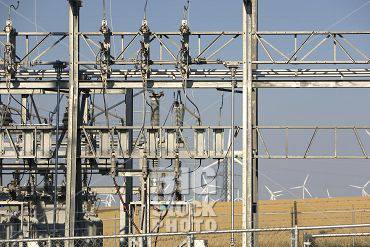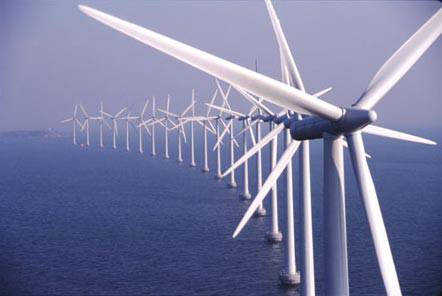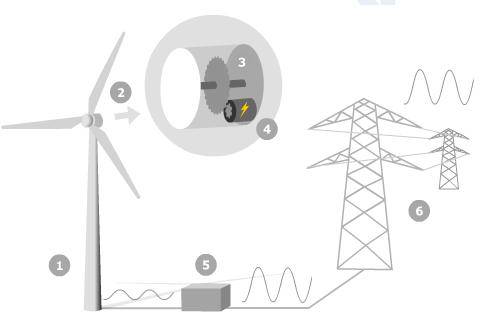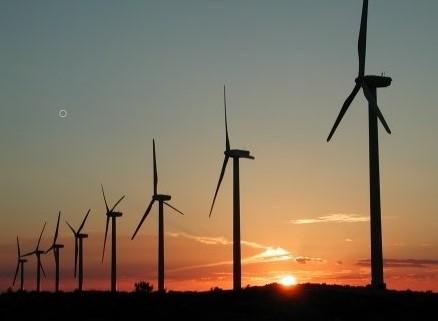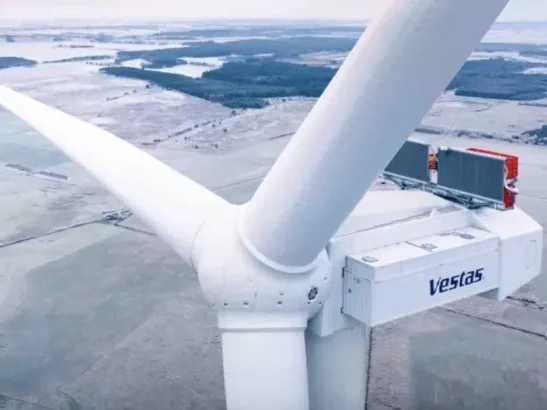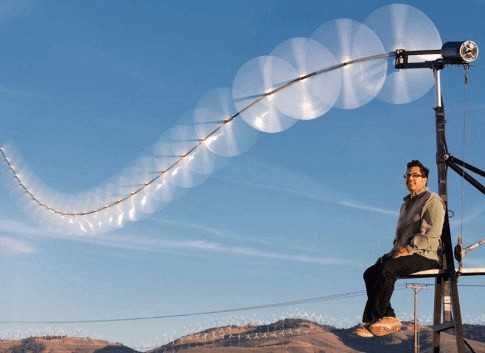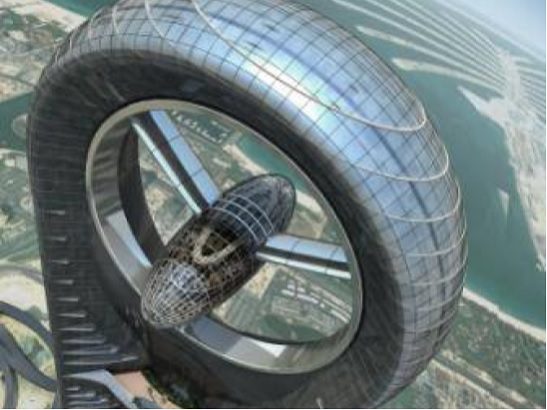Wind Power
Wind power is another alternative energy source that could be used without producing by-products that are harmful to nature. Like solar power, harnessing the wind is highly dependent upon weather and location. The average wind velocity of Earth is around 9 m/sec. Wind turbines are used to harness the wind.
The diagram below shows a simplified version of how a wind turbine converts the kinetic energy in the wind to electrical energy around the country.
1. The wind blows on the blades and makes them turn.
2. The blades turn a shaft inside the nacelle (the box at the top of the turbine)
3. The shaft goes into a gearbox which increases the rotation speed enough for…
4. The generator, which uses magnetic fields to convert the rotational energy into electrical energy.
5. The power output goes to a transformer, which converts the electricity coming out of the generator at around 700 Volts (V) to the right voltage for the distribution system, typically 33,000 V.
6. The national grid transmits power around the country.
Advantages
• Wind energy is free, clean and non-polluting. The generation of wind power does not produce any by-products that could be harmful to the environment. There are no chemicals involved, no waste production, it’s squeaky clean.
• Wind supply is plentiful, so wind energy is a renewable supply. Click on the image on the right, to see the “amount of wind” available across the United States.
• Suitable for less sunny regions. This creates the possibility of generating energy non-stop, during day and night.
• Dovetails well with other systems. The generated wind energy can be used full time in residential or commercial applications combined with your regular power supply. It can also act as a back-up in case your residential supply line fails.
• Simple technology. There is nothing too complex, mechanically, in terms of designing and building wind turbines.
• Cheap electricity. Wind energy is relatively cheap as compared to other sources.
• Safe, if properly maintained.
Disadvantages
• Aesthetically disturbing. Some people just don’t like the look of giant whirling blades structures outside their window.
• Inconstant nature of the wind.
• Affects the bird population. Birds and other flying creatures have trouble seeing the turbines. Although special colouring patterns and slower-moving blades have reduced this problem.
• Wind farms generate noise in quiet, rural sites which some people find disturbing
Main Components of a Wind Turbine System
A basic wind turbine consists of four basic components:
• The Base – which is the foundation of the tower
• The Tower – to which the turbine system is assembled onto
• The Wind blades – which capture the wind and rotate
• The Nacelle – which contains the mechanics, gearbox and generator
• The Electronic Wind Turbine Controller – consists of a number of computers which continuously monitor the condition of the wind turbine and collect statistics on its operation. As the name implies, the controller also controls a large number of switches, hydraulic pumps, valves and motors within the wind turbine.
• Transformer – converts the electricity coming out of the generator at around 700 Volts (V) to the right voltage for the distribution system, typically 33,000 V.
